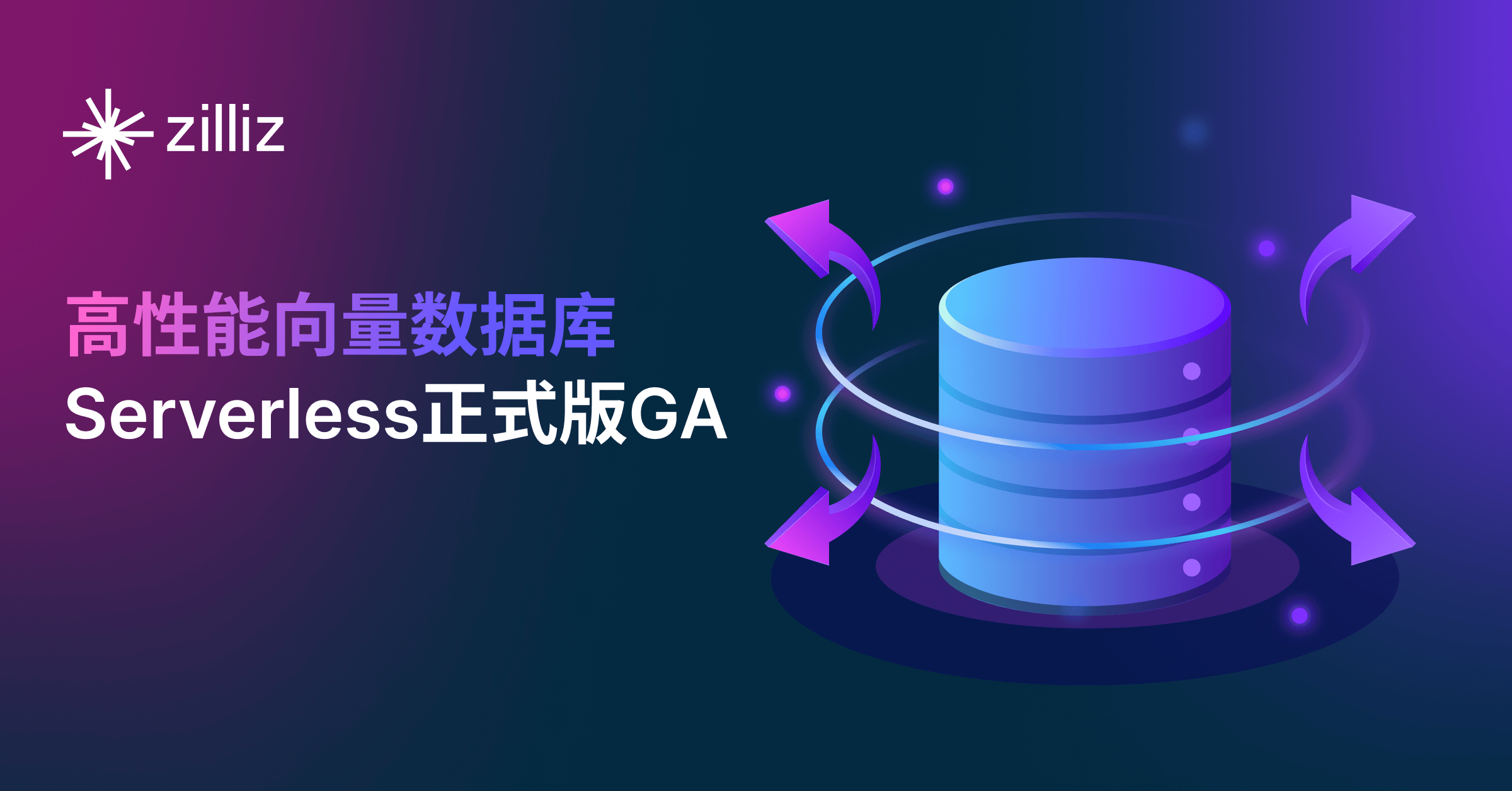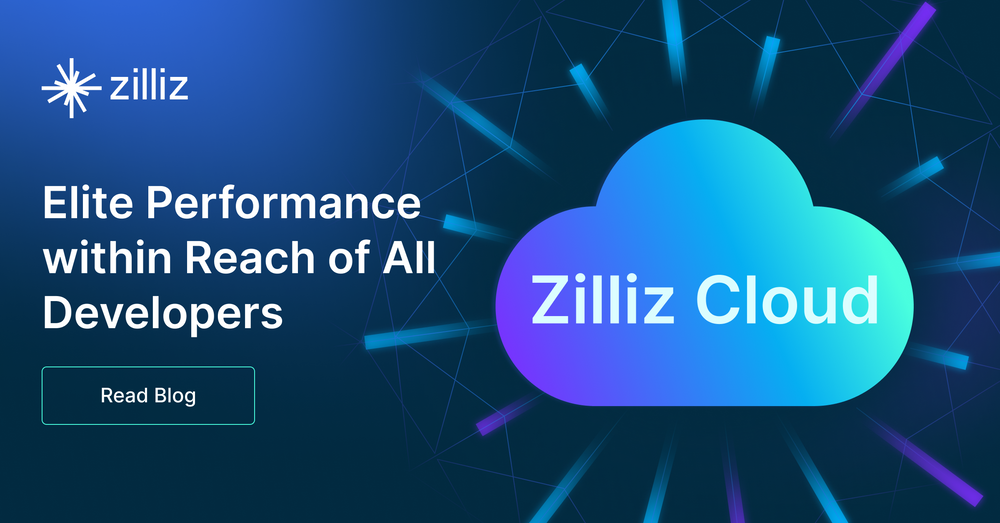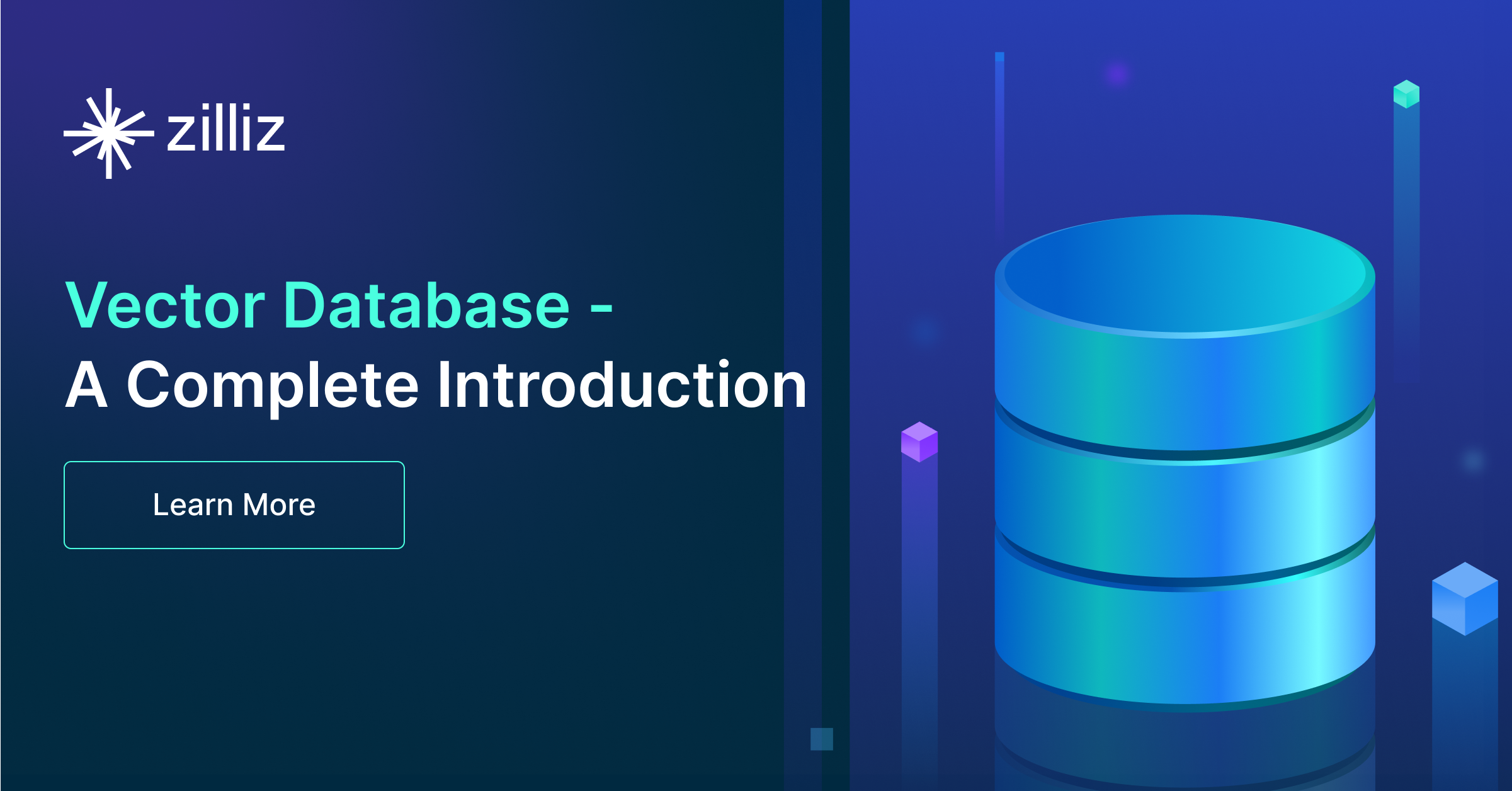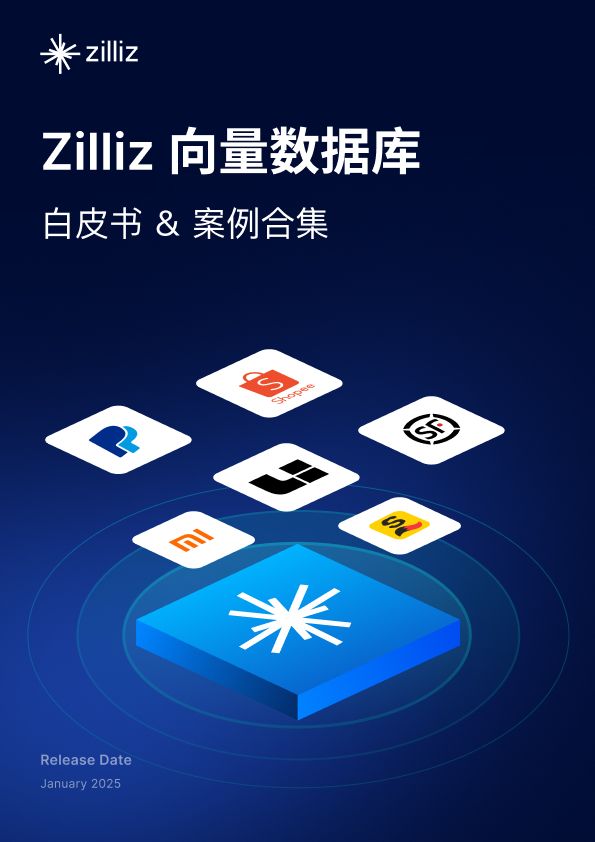Embedding相似度不是万金油,电商、 新闻场景如何按时效性做rerank

引言
假设你要在一个新闻应用中落地语义检索功能,让用户搜索雷军的投资版图盘点时,能自动关联顺为资本、小米战投等核心关联信息。
那么在确定了向量数据库应该用Milvus之后,要怎么对搜索结果排序呢?
是直接根据基于embedding的语义相似度,根据语义进行内容排序,还是引入更多与新闻相关的变量,比如时间?
答案是后者,在类似新闻这样的场景,我们做检索既要考虑相似度,也需要让新鲜内容自动浮出水面,而旧闻悄然后移。
针对这一需求,Milvus 2.6中推出了一个备受关注的亮点是 Time-aware Ranking Functions(时间感知排名函数),也称为 Time-Aware Decay Functions(时间感知衰减函数)。
这个功能让搜索结果不再仅依赖向量相似度,而是巧妙融入时间因素,实现更智能的排名调整。
本文将深入探讨这一功能的细节、意义、应用场景,并通过一个实际案例展示其使用方式。
01 Time-aware Ranking Functions 具体介绍
Time-aware Ranking Functions 通过在搜索结果重排序(re-ranking)阶段应用时间衰减,动态调整文档的相关性分数。 传统向量搜索仅基于相似度(如 L2、COSINE 等)排名,但现实中信息价值往往随时间衰减(如新闻的时效性)。该功能使用集合中的时间戳字段(支持 INT8/16/32/64、FLOAT 或 DOUBLE 类型),计算一个衰减分数(0 到 1 之间),然后与归一化相似度相乘,生成最终排名,从而平衡语义相似度和时间相关性。对于时间相关的衰减,确保参数单位(如秒、毫秒)与集合的时间戳一致。
如何工作
该功能通过三个阶段计算最终分数:
归一化相似度分数:将向量相似度分数标准化到 0-1 范围。对于 L2 和 JACCARD 指标(较低值表示更高相似度),使用公式:
normalized_score = 1.0 - (2 × arctan(score))/π对于 IP、COSINE 和 BM25 指标,直接使用原始分数。计算衰减分数:基于选择的衰减函数,将数值字段(如时间戳)转换为 0-1 范围的衰减分数,反映与理想点(如当前时间)的“距离”。
- 计算最终分数:
final_score = normalized_similarity_score × decay_score在混合搜索中,使用多个向量字段的最大归一化分数:final_score = max(normalized_scores) × decay_score。
支持的衰减函数
Milvus 支持三种衰减模型,每种适合不同曲线形状:
Exponential Decay(指数衰减):初始快速衰减,后有长尾,适合新闻等急需新鲜度的场景。
Gaussian Decay(高斯衰减):铃形曲线,渐进式衰减,适用于平衡时效和全面性的通用搜索。如餐厅推荐中允许中等距离的场所。
Linear Decay(线性衰减):直线衰减,有明确截止点,适合有过期阈值的应用。如事件搜索中超出两周的活动不显示。
配置参数(通过 Python SDK 的 Function 对象实现):
| 参数 | 是否必填 | 描述 | 示例(时间单位:秒) |
|---|---|---|---|
name | 是 | 函数标识符 | "time_decay" |
input_field_names | 是 | 时间戳字段 | ["timestamp"] |
function_type | 是 | 类型为 RERANK | FunctionType.RERANK |
params.reranker | 是 | 指定为 "decay" | "decay" |
params.function | 是 | 衰减类型 | "gauss" |
params.origin | 是 | 参考时间点(分数为 1) | int(time.time())(当前时间) |
params.scale | 是 | 衰减到 decay 值的时间尺度 | 7 * 24 * 60 * 60(7 天) |
params.offset | 否 | 无衰减区(分数保持 1) | 24 * 60 * 60(1 天) |
params.decay | 否 | 尺度点分数(0-1) | 0.5(默认) |
在搜索时,将函数传入 ranker 参数即可应用,支持标准向量搜索和混合搜索。
示例配置(Gaussian):
from pymilvus import Function, FunctionType
from datetime import datetime
decay_ranker = Function(
name="time_decay",
input_field_names=["timestamp"],
function_type=FunctionType.RERANK,
params={
"reranker": "decay",
"function": "gauss",
"origin": int(datetime.now().timestamp()),
"scale": 7 * 24 * 60 * 60, # 7 天
"offset": 24 * 60 * 60, # 1 天
"decay": 0.5
}
)
在 search() 或 hybrid_search() 中应用 ranker 参数。
02 引入该功能的意义和应用场景
引入 Time-aware Ranking Functions 的核心意义在于解决传统向量搜索的“时效盲区”。在动态数据环境中(如社交媒体或实时推荐),旧信息往往淹没新内容,导致用户体验下降。 该功能通过内置衰减机制,直接在 Milvus 引擎中处理时间因素,避免了后处理(如客户端排序)的额外开销,提高了查询效率和精度。
此外,它与 Milvus 的文本分析管道无缝整合,支持全文本搜索与向量嵌入的结合,进一步桥接传统信息检索和现代 AI。 在 v2.6.3 更新中,还优化了分数合并逻辑,提升了性能。 总体而言,这一功能让 Milvus 更适合亿级规模的实时应用,降低了开发复杂度和运维成本,推动 AI 搜索的民主化。
应用场景
Time-aware Ranking Functions 适用于任何需要时效优先的向量搜索场景:
新闻和内容推荐:在新闻 App 中,优先显示昨日热点,而非数月前的旧文。
电商搜索:新上架商品排名更高,结合位置衰减(类似时间)实现“附近新鲜货”。
社交媒体 feeds:新鲜帖子主导 feed,Exponential 模型确保高相关旧帖仍有曝光。
事件查找:Linear 模型设置过期阈值,如仅显示未来两周活动。
这些场景中,该功能通过 configurable 衰减率,确保结果既相关又及时。
03 实际案例
为了快速了解功能,我们通过一个新闻文章搜索系统案例演示,使用 Milvus 构建时间感知排名。 假设我们有一个包含 7 篇 AI 相关新闻的集合,发布日期从 1 天前到 120 天前,包括相同内容但不同日期的文章对。
实施步骤
连接 Milvus 并创建集合:使用 pymilvus 连接,定义 schema 包括 headline、content、dense(语义向量)、sparse_vector(BM25)和 publish_date。
设置嵌入函数:使用 Openai text embedding 模型生成 dense 向量,BM25 生成 sparse 向量。
插入数据:添加文章,publish_date 为时间戳。
配置衰减排名器:定义 Gaussian、Exponential 和 Linear 排名器,以当前时间为 origin。
- 执行搜索:查询
"artificial intelligence advancements",比较无衰减和有衰减结果。
代码片段
(1)连接Milvus和创建schema:
import datetime
import matplotlib.pyplot as plt
import numpy as np
from pymilvus import (
MilvusClient,
DataType,
Function,
FunctionType,
AnnSearchRequest,
)
# Create connection to Milvus
milvus_client = MilvusClient("http://localhost:19530")
# Define collection name
collection_name = "articles_tutorial"
# Clean up any existing collection with the same name
milvus_client.drop_collection(collection_name)
# Create schema with fields for content and temporal information
schema = milvus_client.create_schema(enable_dynamic_field=False, auto_id=True)
schema.add_field("id", DataType.INT64, is_primary=True)
schema.add_field("headline", DataType.VARCHAR, max_length=200, enable_analyzer=True)
schema.add_field("content", DataType.VARCHAR, max_length=2000, enable_analyzer=True)
schema.add_field("dense", DataType.FLOAT_VECTOR, dim=3072) # For dense embeddings
schema.add_field("sparse_vector", DataType.SPARSE_FLOAT_VECTOR) # For sparse (BM25) search
schema.add_field("publish_date", DataType.INT64) # Timestamp for decay ranking
# Create embedding function for semantic search
text_embedding_function = Function(
name="openai_embedding",
function_type=FunctionType.TEXTEMBEDDING,
input_field_names=["content"],
output_field_names=["dense"],
params={
"provider": "openai",
"model_name": "text-embedding-3-large"
}
)
schema.add_function(text_embedding_function)
# Create BM25 function for keyword search
bm25_function = Function(
name="bm25",
input_field_names=["content"],
output_field_names=["sparse_vector"],
function_type=FunctionType.BM25,
)
schema.add_function(bm25_function)
index_params = milvus_client.prepare_index_params()
index_params.add_index(field_name="dense", index_type="AUTOINDEX", metric_type="L2")
index_params.add_index(
field_name="sparse_vector",
index_name="sparse_inverted_index",
index_type="AUTOINDEX",
metric_type="BM25",
)
milvus_client.create_collection(
collection_name,
schema=schema,
index_params=index_params,
consistency_level="Bounded"
)
print(f"Collection {collection_name} is created successfully")
(2)插入数据:
current_time = int(datetime.datetime.now().timestamp())
current_date = datetime.datetime.fromtimestamp(current_time)
print(f"Current time: {current_date.strftime('%Y-%m-%d %H:%M:%S')}")
# Sample news articles spanning different dates
articles = [
{
"headline": "AI Breakthrough Enables Medical Diagnosis Advancement",
"content": "Researchers announced a major breakthrough in AI-based medical diagnostics, enabling faster and more accurate detection of rare diseases.",
"publish_date": int((current_date - datetime.timedelta(days=120)).timestamp()) # ~4 months ago
},
{
"headline": "Tech Giants Compete in New AI Race",
"content": "Major technology companies are investing billions in a new race to develop the most advanced artificial intelligence systems.",
"publish_date": int((current_date - datetime.timedelta(days=60)).timestamp()) # ~2 months ago
},
{
"headline": "AI Ethics Guidelines Released by International Body",
"content": "A consortium of international organizations has released new guidelines addressing ethical concerns in artificial intelligence development and deployment.",
"publish_date": int((current_date - datetime.timedelta(days=30)).timestamp()) # 1 month ago
},
{
"headline": "Latest Deep Learning Models Show Remarkable Progress",
"content": "The newest generation of deep learning models demonstrates unprecedented capabilities in language understanding and generation.",
"publish_date": int((current_date - datetime.timedelta(days=15)).timestamp()) # 15 days ago
},
# Articles with identical content but different dates
{
"headline": "AI Research Advancements Published in January",
"content": "Breakthrough research in artificial intelligence shows remarkable advancements in multiple domains.",
"publish_date": int((current_date - datetime.timedelta(days=90)).timestamp()) # ~3 months ago
},
{
"headline": "New AI Research Results Released This Week",
"content": "Breakthrough research in artificial intelligence shows remarkable advancements in multiple domains.",
"publish_date": int((current_date - datetime.timedelta(days=5)).timestamp()) # Very recent - 5 days ago
},
{
"headline": "AI Development Updates Released Yesterday",
"content": "Recent developments in artificial intelligence research are showing promising results across various applications.",
"publish_date": int((current_date - datetime.timedelta(days=1)).timestamp()) # Just yesterday
},
]
# Insert articles into the collection
milvus_client.insert(collection_name, articles)
print(f"Inserted {len(articles)} articles into the collection")
(3)排名器配置:
# Create a Gaussian decay ranker
gaussian_ranker = Function(
name="time_decay_gaussian",
input_field_names=["publish_date"],
function_type=FunctionType.RERANK,
params={
"reranker": "decay",
"function": "gauss", # Gaussian/bell curve decay
"origin": current_time, # Current time as reference point
"offset": 7 * 24 * 60 * 60, # One week (full relevance)
"decay": 0.5, # Articles from two weeks ago have half relevance
"scale": 14 * 24 * 60 * 60 # Two weeks scale parameter
}
)
# Create an exponential decay ranker with different parameters
exponential_ranker = Function(
name="time_decay_exponential",
input_field_names=["publish_date"],
function_type=FunctionType.RERANK,
params={
"reranker": "decay",
"function": "exp", # Exponential decay
"origin": current_time, # Current time as reference point
"offset": 3 * 24 * 60 * 60, # Shorter offset
"decay": 0.3, # Steeper decay
"scale": 10 * 24 * 60 * 60 # Different scale
}
)
# Create a linear decay ranker
linear_ranker = Function(
name="time_decay_linear",
input_field_names=["publish_date"],
function_type=FunctionType.RERANK,
params={
"reranker": "decay",
"function": "linear", # Linear decay
"origin": current_time, # Current time as reference point
"offset": 7 * 24 * 60 * 60, # One week (full relevance)
"decay": 0.5, # Articles from two weeks ago have half relevance
"scale": 14 * 24 * 60 * 60 # Two weeks scale parameter
}
)
(4)搜索:
# Helper function to format search results with dates and scores
def print_search_results(results, title):
print(f"\n=== {title} ===")
for i, hit in enumerate(results[0]):
publish_date = datetime.datetime.fromtimestamp(hit.get('publish_date'))
days_from_now = (current_time - hit.get('publish_date')) / (24 * 60 * 60)
print(f"{i+1}. {hit.get('headline')}")
print(f" Published: {publish_date.strftime('%Y-%m-%d')} ({int(days_from_now)} days ago)")
print(f" Score: {hit.score:.4f}")
print()
# Define our search query
query = "artificial intelligence advancements"
# 1. Search without decay ranking (purely based on semantic relevance)
standard_results = milvus_client.search(
collection_name,
data=[query],
anns_field="dense",
limit=7, # Get all our articles
output_fields=["headline", "content", "publish_date"],
consistency_level="Bounded"
)
print_search_results(standard_results, "SEARCH RESULTS WITHOUT DECAY RANKING")
# Store original scores for later comparison
original_scores = {}
for hit in standard_results[0]:
original_scores[hit.get('headline')] = hit.score
# 2. Search with each decay function
# Gaussian decay
gaussian_results = milvus_client.search(
collection_name,
data=[query],
anns_field="dense",
limit=7,
output_fields=["headline", "content", "publish_date"],
ranker=gaussian_ranker,
consistency_level="Bounded"
)
print_search_results(gaussian_results, "SEARCH RESULTS WITH GAUSSIAN DECAY RANKING")
# Exponential decay
exponential_results = milvus_client.search(
collection_name,
data=[query],
anns_field="dense",
limit=7,
output_fields=["headline", "content", "publish_date"],
ranker=exponential_ranker,
consistency_level="Bounded"
)
print_search_results(exponential_results, "SEARCH RESULTS WITH EXPONENTIAL DECAY RANKING")
# Linear decay
linear_results = milvus_client.search(
collection_name,
data=[query],
anns_field="dense",
limit=7,
output_fields=["headline", "content", "publish_date"],
ranker=linear_ranker,
consistency_level="Bounded"
)
print_search_results(linear_results, "SEARCH RESULTS WITH LINEAR DECAY RANKING")
(5)结果
=== SEARCH RESULTS WITHOUT DECAY RANKING ===
1. AI Research Advancements Published in January
Published: 2025-07-23 (90 days ago)
Score: 0.7090
2. New AI Research Results Released This Week
Published: 2025-10-16 (5 days ago)
Score: 0.7090
3. AI Development Updates Released Yesterday
Published: 2025-10-20 (1 days ago)
Score: 0.7317
4. Tech Giants Compete in New AI Race
Published: 2025-08-22 (60 days ago)
Score: 1.0101
5. AI Breakthrough Enables Medical Diagnosis Advancement
Published: 2025-06-23 (120 days ago)
Score: 1.1065
6. Latest Deep Learning Models Show Remarkable Progress
Published: 2025-10-06 (15 days ago)
Score: 1.1649
7. AI Ethics Guidelines Released by International Body
Published: 2025-09-21 (30 days ago)
Score: 1.3030
=== SEARCH RESULTS WITH GAUSSIAN DECAY RANKING ===
1. New AI Research Results Released This Week
Published: 2025-10-16 (5 days ago)
Score: 0.6074
2. AI Development Updates Released Yesterday
Published: 2025-10-20 (1 days ago)
Score: 0.5979
3. Latest Deep Learning Models Show Remarkable Progress
Published: 2025-10-06 (15 days ago)
Score: 0.3601
4. AI Ethics Guidelines Released by International Body
Published: 2025-09-21 (30 days ago)
Score: 0.0642
5. Tech Giants Compete in New AI Race
Published: 2025-08-22 (60 days ago)
Score: 0.0000
6. AI Research Advancements Published in January
Published: 2025-07-23 (90 days ago)
Score: 0.0000
7. AI Breakthrough Enables Medical Diagnosis Advancement
Published: 2025-06-23 (120 days ago)
Score: 0.0000
=== SEARCH RESULTS WITH EXPONENTIAL DECAY RANKING ===
1. AI Development Updates Released Yesterday
Published: 2025-10-20 (1 days ago)
Score: 0.5979
2. New AI Research Results Released This Week
Published: 2025-10-16 (5 days ago)
Score: 0.4774
3. Latest Deep Learning Models Show Remarkable Progress
Published: 2025-10-06 (15 days ago)
Score: 0.1065
4. AI Ethics Guidelines Released by International Body
Published: 2025-09-21 (30 days ago)
Score: 0.0161
5. Tech Giants Compete in New AI Race
Published: 2025-08-22 (60 days ago)
Score: 0.0005
6. AI Research Advancements Published in January
Published: 2025-07-23 (90 days ago)
Score: 0.0000
7. AI Breakthrough Enables Medical Diagnosis Advancement
Published: 2025-06-23 (120 days ago)
Score: 0.0000
=== SEARCH RESULTS WITH LINEAR DECAY RANKING ===
1. New AI Research Results Released This Week
Published: 2025-10-16 (5 days ago)
Score: 0.6074
2. AI Development Updates Released Yesterday
Published: 2025-10-20 (1 days ago)
Score: 0.5979
3. Latest Deep Learning Models Show Remarkable Progress
Published: 2025-10-06 (15 days ago)
Score: 0.3226
4. AI Research Advancements Published in January
Published: 2025-07-23 (90 days ago)
Score: 0.3037
5. Tech Giants Compete in New AI Race
Published: 2025-08-22 (60 days ago)
Score: 0.2484
6. AI Breakthrough Enables Medical Diagnosis Advancement
Published: 2025-06-23 (120 days ago)
Score: 0.2339
7. AI Ethics Guidelines Released by International Body
Published: 2025-09-21 (30 days ago)
Score: 0.2084
结果分析
(1)无衰减排名(纯语义相关性搜索)
这是基准(Baseline),其结果完全由查询artificial intelligence advancements与每篇文章内容之间的语义相似度决定,时间因素被完全忽略。
相同内容,相同得分: 两篇内容完全相同的文章(“AI Research Advancements Published in January” 和 “New AI Research Results Released This Week”)尽管发布日期相差近三个月,但它们的得分完全一样(0.7090)。这完美地证明了在不使用时间衰减器时,publish_date 字段对排名没有任何影响。
相关性决定排名: 排名顺序纯粹基于语义相关性(在这里用L2距离表示,值越小越相关)。得分最低(最相关)的两篇文章内容都包含 "artificial intelligence" 和 "advancements" 的直接同义词或强相关概念。而得分最高的(最不相关)文章 “AI Ethics Guidelines...” 虽然也关于AI,但主题更偏向“伦理”,与“技术进步”的语义距离较远。
时效性被忽略: 最新的文章(1天前、5天前发布)并没有排在最前面。甚至一篇90天前的文章排在了第一位,这在很多需要获取最新资讯的场景下是不可接受的。
(2)高斯衰减排名 (Gaussian Decay)
高斯衰减器引入了时间维度,其衰减曲线像一个“钟形”,对近期内容友好,对中期内容惩罚逐渐加重,对远期内容则给予极大的惩罚。
配置: offset 为7天(一周内不惩罚),scale 为14天,decay 为0.5(两周前的文章,时间权重衰减为50%)。
近期内容优先: 最新的两篇文章(1天前和5天前)现在跃居前两位。因为它们都在7天的 offset 范围之内,时间上没有受到惩罚,排名主要由它们原始的语义相关性决定。
远期内容被“过滤”: 所有超过60天的文章,其最终得分都变成了 0.0000。这表明高斯衰减函数对超过一定时间阈值(在此配置下约为1-2个月)的内容施加了极大的惩罚,使其几乎不可能出现在靠前的位置。
远期内容被“过滤”: 所有超过60天的文章,其最终得分都变成了 0.0000。这表明高斯衰减函数对超过一定时间阈值(在此配置下约为1-2个月)的内容施加了极大的惩罚,使其几乎不可能出现在靠前的位置。
(2)指数衰减排名 (Exponential Decay)
指数衰减是最“严厉”的时间衰减方式,时间越久,权重下降得越快。
配置: offset 仅3天,scale 为10天,decay 为0.3。这些参数比高斯衰减的配置更为“激进”。
极致的时效性: 1天前的文章排名第一,5天前的文章虽然也很新,但因为它已经超出了3天的 offset,其分数(0.4774)相比1天前的文章(0.5979)有了明显的下降。这体现了指数衰减对“最新”的极致追求。
剧烈的分数下降: 15天前的文章得分骤降至 0.1065,远低于高斯衰减下的得分。30天前的文章得分几乎为零。这显示了指数衰减的惩罚力度非常大。
快速“遗忘”: 和高斯衰减类似,超过一定时间的内容得分都趋近于零,但这个“遗忘”速度更快
(3)线性衰减排名 (Linear Decay)
线性衰减的惩罚是恒定的,随着时间的推移,分数呈直线下降,是最“温和”的衰减方式。
旧内容仍有价值: 最显著的区别在于,旧文章依然保留了可观的分数。90天前和120天前的文章得分分别为 0.3037 和 0.2339,并且仍然排在榜单上。而在高斯和指数衰减中,它们的得分都是0。
平衡相关性与时间: 虽然最新的文章依然排名靠前,但线性衰减给了语义相关性更高的权重。例如,90天前的文章(原始语义分很高)排在了30天前的文章(原始语义分较低)之前,这说明线性衰减虽然惩罚了它的“旧”,但不足以完全抵消其内容上的“高相关性”。
温和的惩罚: 分数的下降不像其他两种衰减那样剧烈,提供了一个更加平滑的过渡。
对比
| 排名器类型 | 特点 | 效果 | 适用场景 |
|---|---|---|---|
| 无衰减 | 只看内容,不看时间 | 找到语义最相关的,但可能过时。 | 知识库、辞典等内容不随时间变化或时间不重要的场景。 |
| 高斯衰减 | 平滑的“钟形”惩罚 | 强烈偏好近期内容,但对中期内容有一定宽容度,快速过滤掉远期内容。 | 新闻、博客、电商推荐等,需要在时效性和相关性之间做平衡。 |
| 指数衰减 | 剧烈、严苛的惩罚 | 极致追求最新内容,对稍旧的信息也施加重罚。 | 突发新闻、社交媒体Feeds、实时监控等“越新越好”的场景。 |
| 线性衰减 | 温和、恒定的惩罚 | 优先展示新内容,但旧的、高相关性的内容依然能获得不错的排名。 | 技术文档、学术研究、法律文件等旧信息仍具重要参考价值的领域。 |
在实践中,我们可以根据以上排名器各自的特点,进行选择性的配置。
如有更多相关问题,欢迎评论区分享交流。

技术干货
LLMs 记忆体全新升级:六大新功能全面出击,用户体验值拉满!
本次,我们新增了价格计算器、取消存储配额限制、自动暂停不活跃数据库等功能,用户体验感再上新台阶。通过阅读本文,用户可以快速、详尽地了解 Zilliz Cloud 的六大新功能!
2023-5-5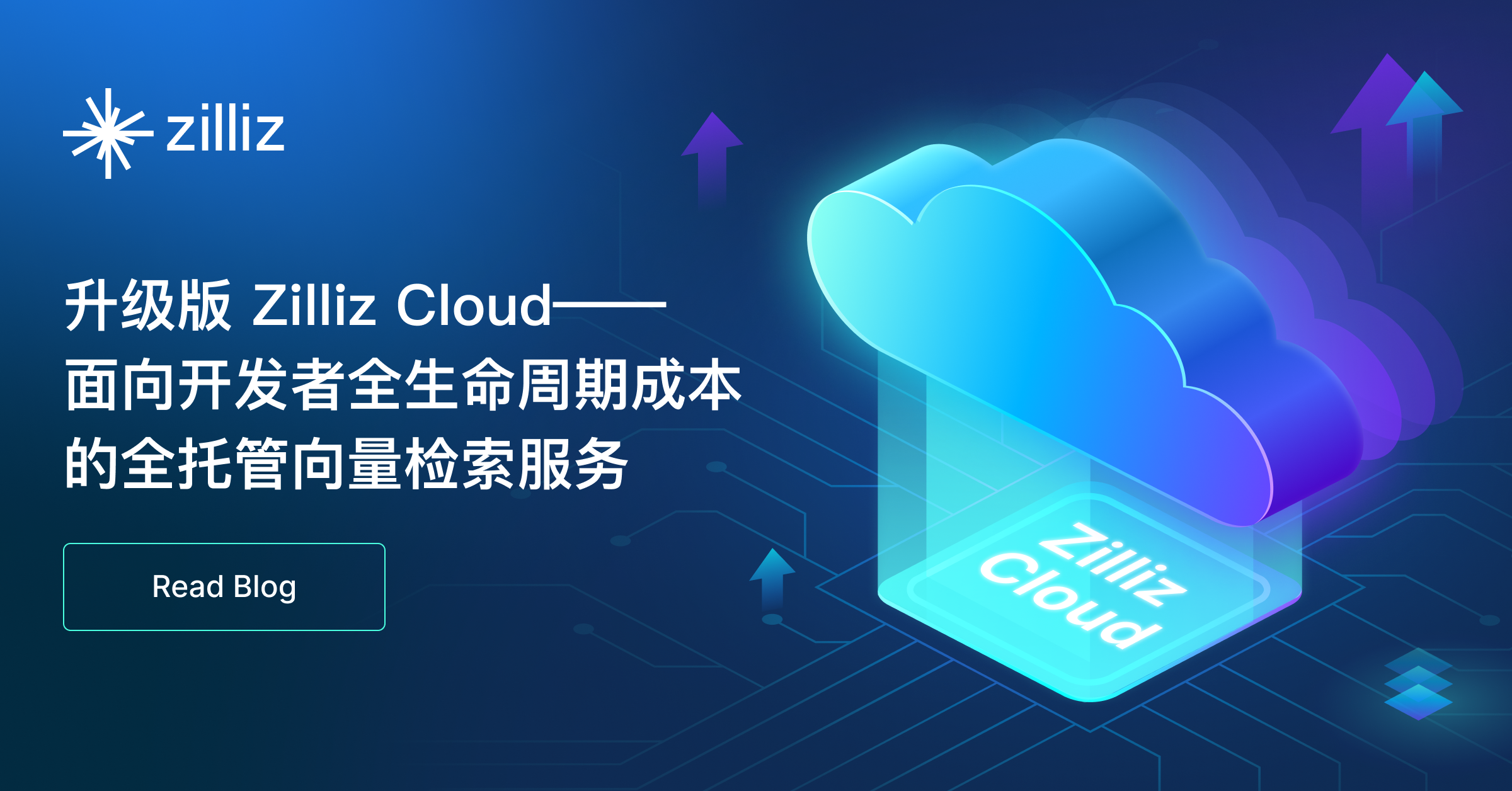
技术干货
如何设计一个面向开发者全生命周期成本的全托管向量检索服务产品?
作为产品的设计者和开发者,必须始终以用户为中心,积极倾听他们的需求,并集中精力降低软件开发的全链路成本,而非过度追求极致性能或过分炫技。在这种背景下,降低开发者的综合使用成本已成为 Zilliz Cloud 和开发团队过去的主要使命。
2023-7-5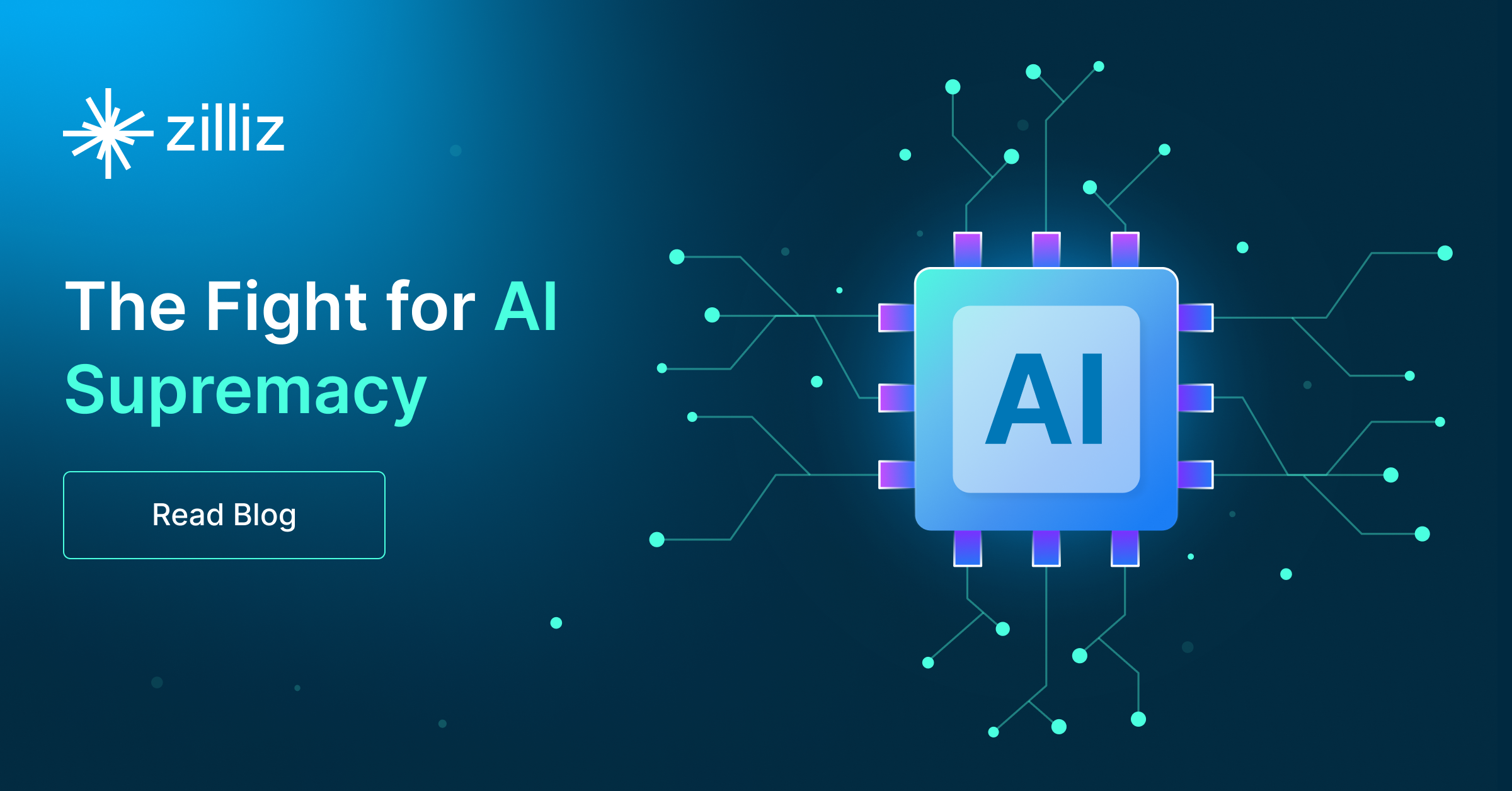
技术干货
LLMs 诸神之战:LangChain ,以【奥德赛】之名
毫无疑问,大语言模型(LLM)掀起了新一轮的技术浪潮,成为全球各科技公司争相布局的领域。诚然,技术浪潮源起于 ChatGPT,不过要提及 LLMs 的技术发展的高潮,谷歌、微软等巨头在其中的作用不可忽视,它们早早地踏入 AI 的技术角斗场中,频频出招,势要在战斗中一争高下,摘取搜索之王的桂冠。而这场大规模的 AI 之战恰好为 LLMs 技术突破奏响了序曲。LangChain 的加入则成为此番技术演进的新高潮点,它凭借其开源特性及强大的包容性,成为 LLMs 当之无愧的【奥德赛】。
2023-5-17
